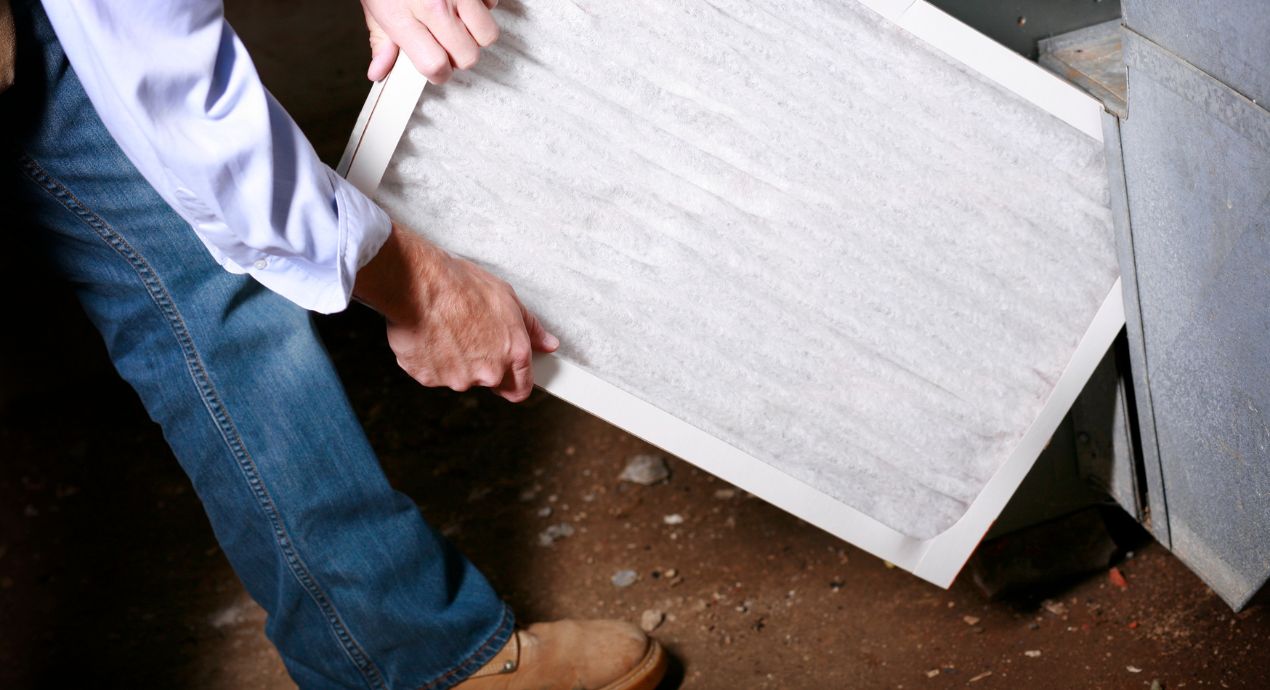
Contemplating coverage?
Subscribe to receive our emails & get
$200 off!
Have questions?
Call us: (833) 544-8273


Written By Rachel Cherem
In the expansive landscape of home maintenance, where every detail plays a crucial role, there's one task that often escapes the limelight: changing a furnace filter. The humble furnace filter, often overlooked, plays a pivotal role in maintaining indoor air quality, reducing energy consumption, and extending the life expectancy of your heating system. This detailed guide aims to delve even deeper into the intricacies of successfully changing a furnace filter, unraveling the process to empower you with the knowledge needed to take control of your home's comfort, energy efficiency, and long-term durability.
The air we breathe within the confines of our homes has a direct impact on our health and well-being. A clean furnace filter acts as the primary defense against airborne particles and pollutants, safeguarding the quality of the air circulating in your living spaces. Over time, filters accumulate dust, pollen, pet dander, and other contaminants, thereby compromising the air you and your family breathe. Regularly changing your furnace filter becomes an indispensable practice, ensuring a healthier living environment for everyone under your roof.
Beyond its role in air quality, a clogged or dirty filter can significantly impede the airflow within your heating system. This obstruction forces the furnace to work harder, resulting in increased energy consumption and, consequently, higher utility bills. By maintaining a clean filter, you not only enhance energy efficiency but also make a considerable dent in long-term operating costs, contributing to both environmental and financial sustainability.
Furnace filters come in a plethora of types, each designed to target specific particles and serve different purposes. From the basic fiberglass filters to the more advanced high-efficiency HEPA filters, understanding the differences is paramount in making an informed decision. Consider factors such as filter material, Minimum Efficiency Reporting Value (MERV) rating, and compatibility with your HVAC system to ensure optimal performance.
Selecting the correct filter size is equally crucial for optimal performance. Refer to your furnace's manual or inspect the existing filter for sizing information. Using an ill-fitting filter can lead to air leaks, allowing unfiltered air to circulate in your home and diminishing the overall effectiveness of the filtration system.
Before attempting to change the filter, prioritize safety by turning off the furnace. Locate the power switch on the unit or shut off the breaker that controls the furnace to avoid any potential accidents or electrical issues.
The filter's location varies depending on your HVAC system. Common placements include inside the furnace cabinet, in the return air duct, or behind a dedicated access panel. Refer to your furnace's manual or seek professional advice if you're unsure about the filter's whereabouts.
Handle the old filter with care, noting its orientation as you remove it. Filters typically have arrows indicating the direction of airflow. Dispose of the old filter in accordance with local regulations, considering the environmental impact of its disposal.
Before installing the new filter, take a moment to clean the filter compartment and the surrounding areas. Use a vacuum or a damp cloth to remove any accumulated dust and debris, ensuring a pristine environment for the new filter.
Ensure the new filter matches the size and type recommended for your furnace. Follow the arrows on the filter to install it in the correct orientation, paying attention to any labeled instructions or markings that may accompany the filter.
Once the new filter is securely in place, turn the furnace back on. Monitor the system for any unusual noises or issues that may indicate a problem with the installation. Address any concerns promptly to maintain the optimal performance of your heating system.
Furnace filters require regular inspections to assess their condition. Monthly checks during heavy-use seasons and at least quarterly during lighter-use periods are advisable. Keep an eye out for excessive dirt, discoloration, or damage, as these signs can indicate the need for more frequent replacements.
Establish a routine for changing your furnace filter by setting reminders on your calendar or utilizing smartphone apps. Consistency is key to maintaining optimal indoor air quality and energy efficiency. By integrating filter changes into your regular maintenance schedule, you ensure that your heating system operates at its best throughout the year.
If you notice uneven heating or cooling in your home, a dirty or clogged filter may be the culprit. Changing the filter can often resolve this issue, but if problems persist, consult with a professional HVAC technician to identify and address any underlying problems.
Strange sounds or odors emanating from your furnace may indicate a problem with the filter or other components. Inspect the filter and, if necessary, consult a professional for further assessment. Addressing issues promptly can prevent potential damage to your heating system.
Consider home warranty coverage to protect all your home appliances and systems, heating included. With Liberty Home Guard’s Total Home Guard or Systems Guard plan, you can make a claim to have your system maintained or repaired for less than it would cost to hire an independent contractor.
Learn more by exploring our website or calling our team at (866)-432-1283.
There's a reason Liberty Home Guard was rated the #1 Home Warranty
Service by U.S. News and World Report for 2021, 2022, 2023, and 2024. Check out our services.
Stay Ahead of Potential
Home Mishaps!
Subscribe to our Liberty Home Guard Newsletter and gain access to exclusive content that ensures your peace of mind.